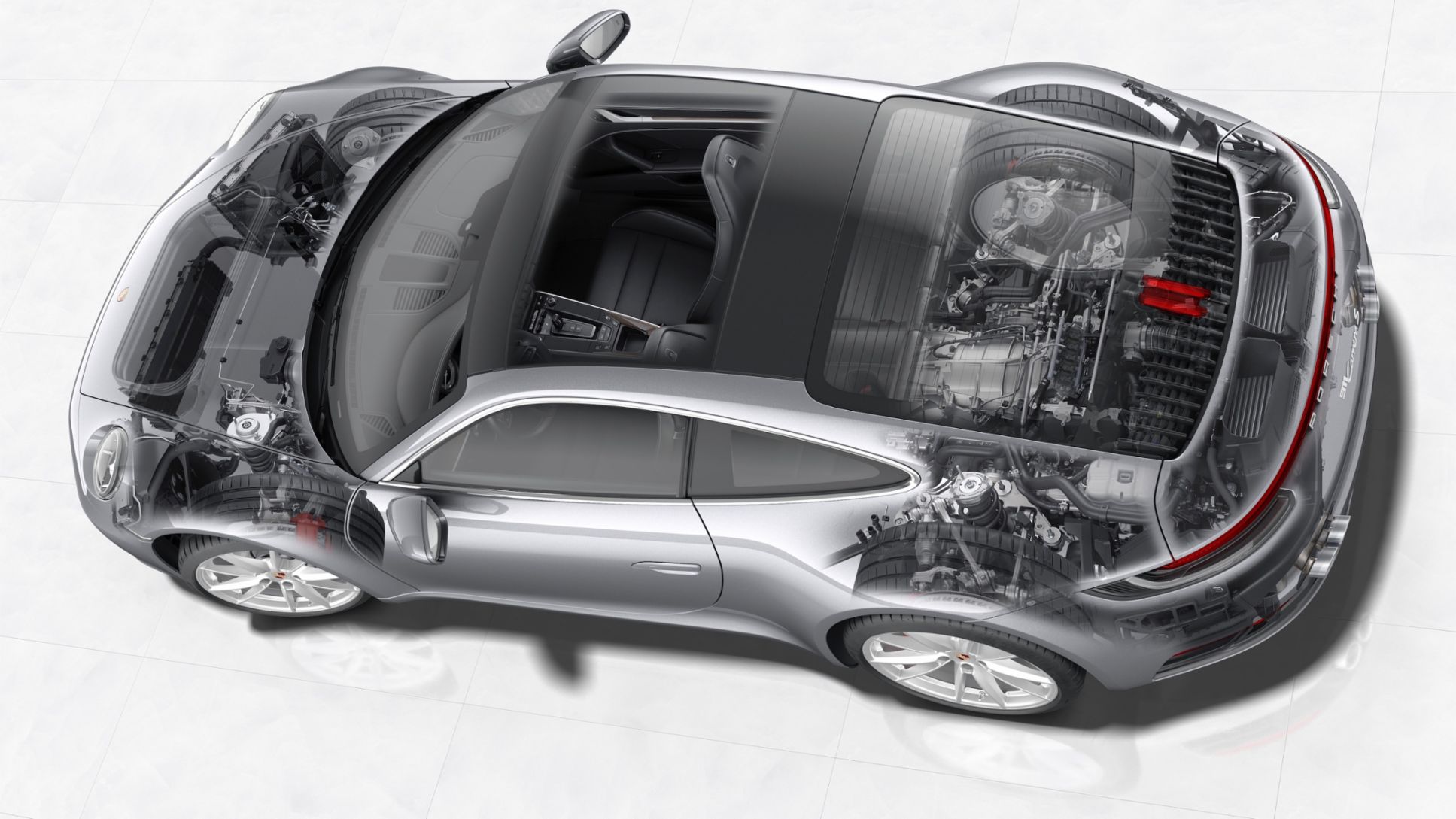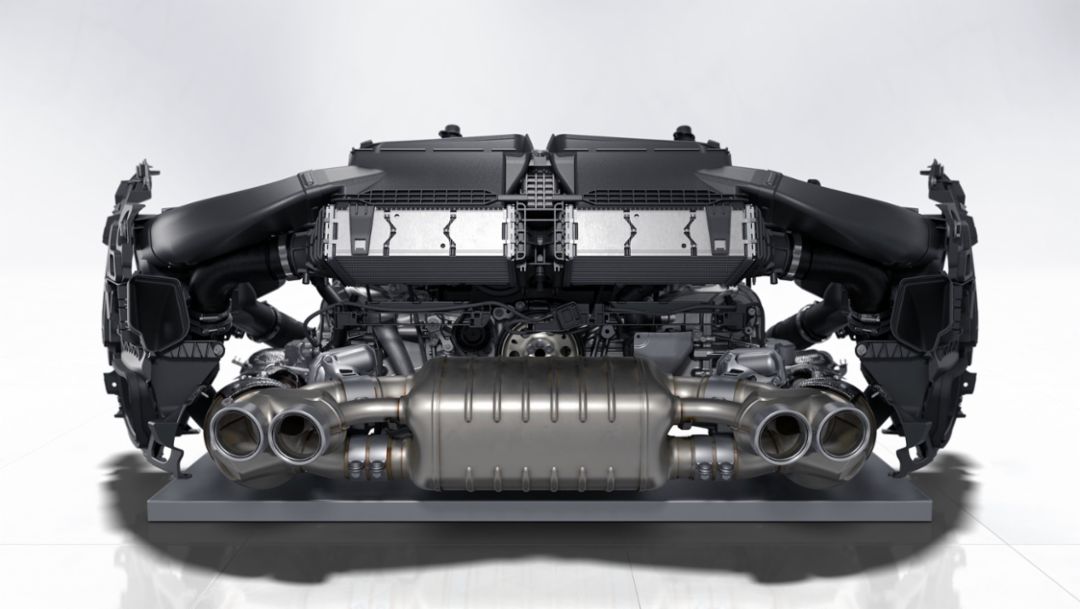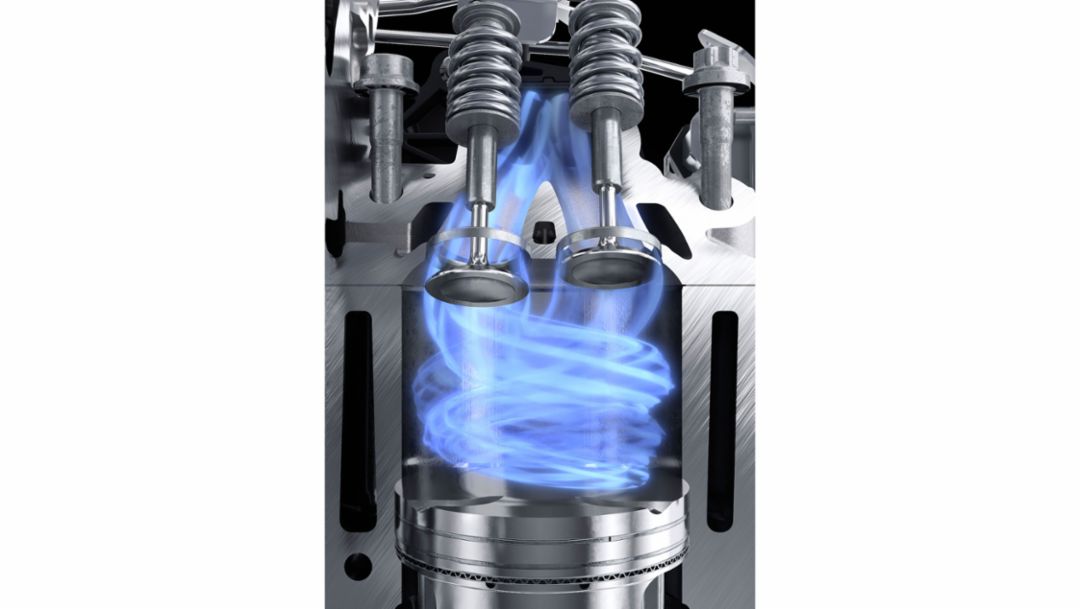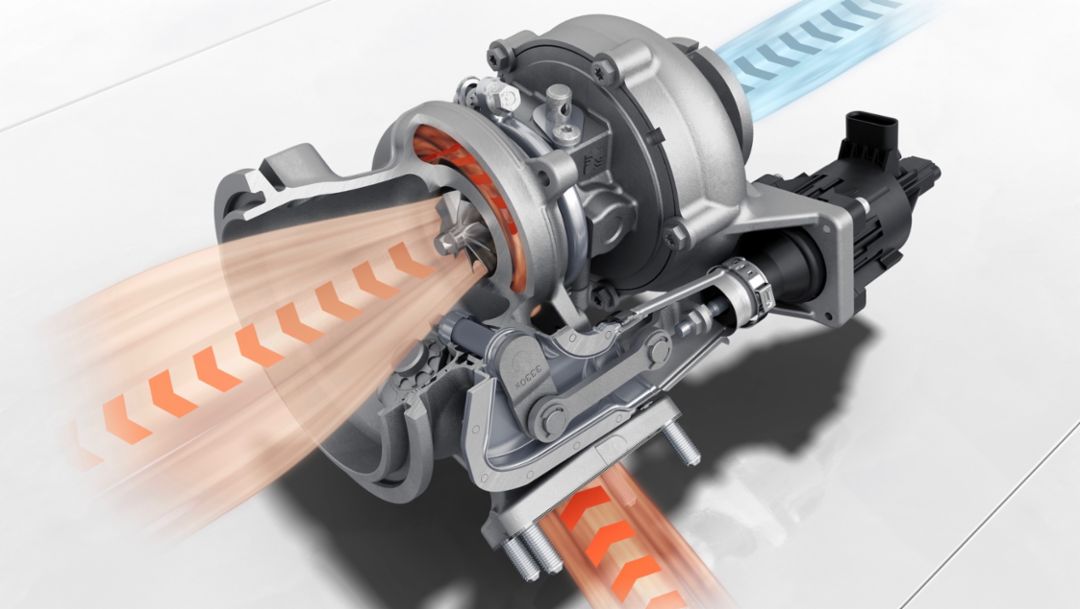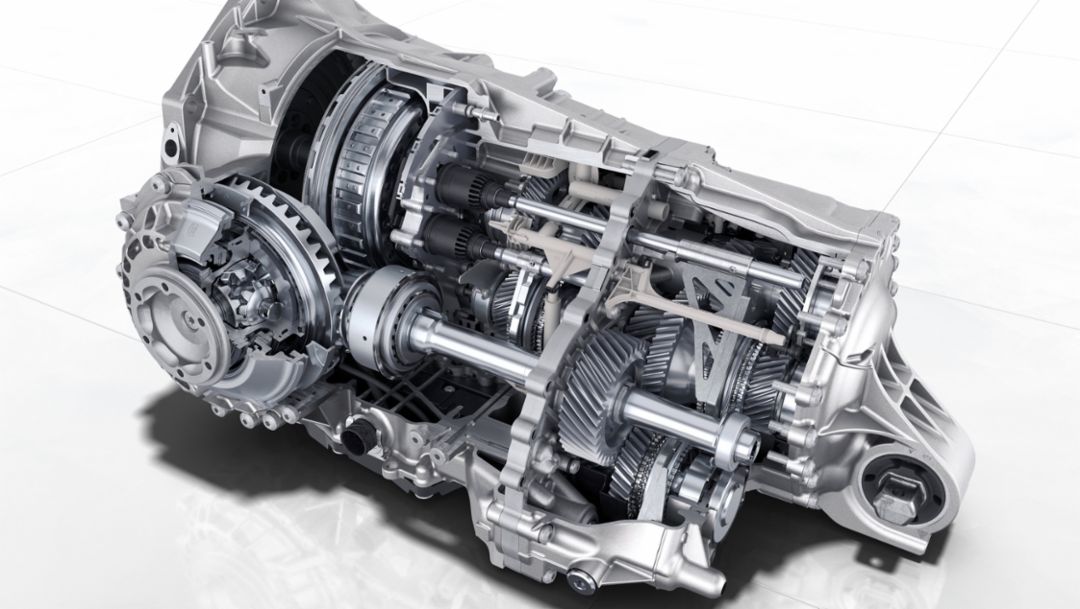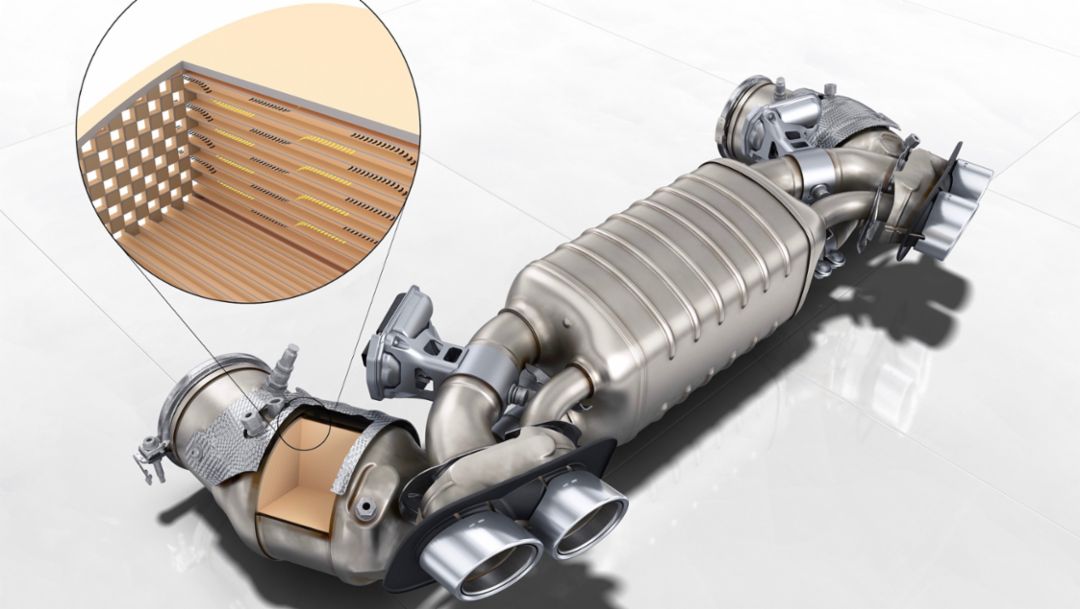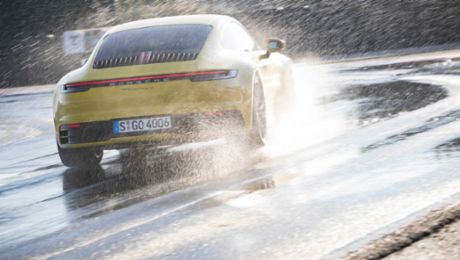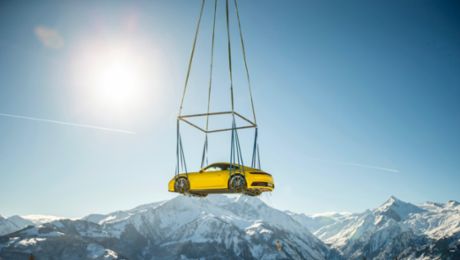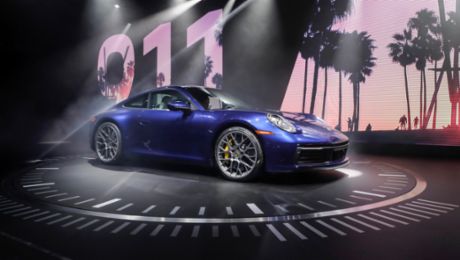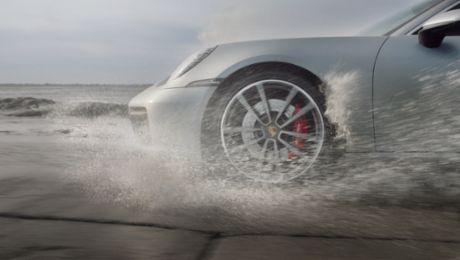The tried-and-trusted six-cylinder boxer engine with twin-turbo has been optimised again in terms of power output, torque and emissions, for use in the two new 992 type 911 models – the 911 Carrera S and 911 Carrera 4S. At 331 kW (450 PS; combined cycle fuel consumption 9.0 l/100 km; combined cycle CO2 emissions 206 g/km), the powertrain now generates 22 kW (30 PS) and 530 Nm torque, which is exactly 30 Nm more than its predecessor. The maximum torque lies between 2,300 and 5,000 rpm.
This enhancement has been achieved with new concepts from our Porsche engineers and fine tuning inside the water-cooled boxer engine, as well as various measures around the engine. The interaction also enhances revving power and performance, improves response and torque curve, and not least, increases powertrain stability.
Fine tuning inside the engine
New features include the aluminium crankcase, as well as cylinder heads with flow-optimised inlet and exhaust ports. To facilitate the use of VarioCam Plus valve timing technology, the valve lifts of the two inlet valves have been configured to be different on each cylinder: an asymmetric small valve lift means that the air intake is displaced at low speeds and loads into an additional swirl flap to improve mixing with the injected fuel, making the combustion process more robust. The measures reduce consumption and harmful emissions.
The new direct fuel injection (DFI) system with piezo injector, which opens outwards and is centrally positioned in the combustion chamber, has a similar effect. These modifications allow the injection valves to open and close far more quickly, to supply a finer fuel mist, and to ensure high-quality distribution of very small, precise quantities, up to five times per combustion cycle.
New turbocharger core
Growth increases power output. This also applies when it comes to the two turbochargers of the six-cylinder engine in the eighth-generation 911. The compressor and turbine sides have been expanded and a redesigned turbo manifold is now made from cast metal rather than sheet metal. In contrast to the predecessor model the chargers are arranged symmetrically, with the compressor and turbine wheels on the right and left charger turning in opposing directions, which optimises the flow ratios as well as the charger’s response.
To optimise the exhaust tract flow through the manifold, the exhaust turbocharger and catalytic converters, the chargers have been arranged symmetrically. This takes account of the tight package conditions typical to sports cars. Electric flaps help widen the opening angle of the wastegate valve, the diameter of which has been increased. This is designed to optimise catalytic converter heating. The maximum boost pressure is now 1.2 bar.
The completely redesigned and expanded intercoolers also help optimise power output. These are now positioned directly above the engine and therefore centrally under the rear engine cover, which significantly improves the air intake and exhaust. This development has greatly improved engine efficiency and re-cooling. As a result of this adjustment, the air filter, which in the previous generation was fitted in this exact position under the rear wing, had to be split into two and installed sideways into the rear mudguards.
The 8-speed dual-clutch transmission is a completely new feature which is fitted as standard in the 911 Carrera with rear-wheel drive and in the Carrera 4S with four-wheel drive. The greater spread compared with the 7-speed dual-clutch transmission in the 991 is designed to ensure better shift performance, more driving comfort and greater efficiency all round.
Harmonious gear ratio spread
As top speed is reached in sixth gear, eighth gear is designed as an additional overdrive to seventh gear – a measure that Porsche engineers have implemented to improve matching of gear ratio increments and shifting to sixth gear. As such, first gear has a shorter gear ratio, which better matches lower gears to the turbocharged engines. Furthermore, the gear ratio spread is now far more harmonious and provides another method via which to reduce consumption. This last objective is also enhanced by a regulated oil pump which controls pressure for all gear shifts and clutch processes as required, and therefore reduces loss of power.
To better coordinate vehicle starting, engine speed has been adopted as a new control parameter in place of the clutch function. A change of control parameters makes for more harmonious gear changing. Shift performance at high speed and loads is improved through use of the “lightning quick shift” systems familiar to drivers of the 991 generation of the 911 GT.
These systems are activated when manually changing up the gears and in automatic mode when Sport Plus mode is active, and they have been further optimised compared with their predecessors. Our engineers have installed an additional “filling bypass” in the clutch hydraulics and have adapted the software control accordingly. This ensures the new 911 Carrera is very quick off the mark, with a speed of 0-100 km/h in 3.5 seconds (911 Carrera S) or 3.4 seconds (911 Carrera 4S) – making these models 0.4 seconds faster than their equivalent predecessors.
A new feature of the eighth-generation 911 is the gasoline particulate filter (GPF), a technical innovation which makes the 992 and all other Porsche combustion engines to come, future-fit in terms of exhaust emissions. It uses enclosed ceramic filters. Exhaust gases are fed through alternately sealed channels, forcing the gas to flow through the walls of the particulate filter. The particulates are then burned off in an automatic regeneration process.
Info
Text first published in "Automobil Produktion" - Special edition 2018 "Der neue Porsche 911"
Consumption data
911 Carrera S: Fuel consumption combined 8.9 l/100 km, CO2 emissions 205 g/km
911 Carrera 4S: Fuel consumption combined 9.0 l/100 km, CO2 emissions 206 g/km
